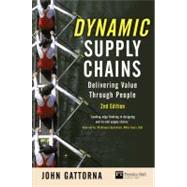
John Gattorna has spent a lifetime working in and around supply chains, in many different capacities – line executive, researcher, consultant/adviser and teacher. He is passionate about the subject matter – some might say obsessive.
In the late 1980s, John became disenchanted with the lack of conceptual depth in the ‘logistics’ field; and as it turned out this did not improve much as logistics thinking morphed into ‘supply chains’ in the 1990s. So he started to search for a new model/framework that would better inform the design and operation of enterprise supply chains seeking to satisfy customers and consumers. And he found it; dynamic alignment.
For the last two decades John has been working with companies around the world to take his new model from the conceptual stage to a finer level of granularity. It has been a complex task because it has involved learning about, and combining, several disciplines – consumer/customer behavior; internal cultural capability of the enterprise; leadership
styles; and of course the operational aspects of corporate logistics networks and supply chains. The unique thing about John’s perspective is that he presents a multi-disciplinary approach to the design and management of supply chains, and this requires an eclectic mindset.
He has written several books along the way as his thinking evolved, but his two most recent titles have been seminal: Living Supply Chains(FT Prentice Hall, Harlow, 2006), and Dynamic Supply Chain Alignment, (Gower Publishing, Farnham, 2009).
| A word about the title | p. xi |
| Foreword | p. xiii |
| Preface | p. xv |
| Author's acknowledgements | p. xix |
| Publisher's acknowledgements | p. xxii |
| A new business model for new and challenging times | p. 1 |
| Re-engaging with customers and suppliers | |
| Customer conversations | p. 35 |
| All pathways lead to customers | |
| Designing supply chain strategies | p. 71 |
| Formulating and delivering the appropriate value propositions | |
| Implementing a multiple supply chain configuration | p. 91 |
| Aligning internal culture with customers to execute strategy | |
| Leading from the front | p. 121 |
| Converting customer insight into successful implementation | |
| Designing responsive organization structures | p. 141 |
| Enabling enterprise supply chains | |
| Continuous replenishment supply chains | p. 169 |
| Where relationships matter most | |
| Leap supply chains | p. 197 |
| Focusing on efficiency and lowest cost-to-serve | |
| Agile supply chains | p. 225 |
| Where quick response is paramount | |
| Fully flexible supply chains | p. 251 |
| Where nothing is impossible | |
| The 'Triple-A' supply chain revisited | p. 279 |
| What is really going on under the covers | |
| Supplier conversations and the four generic supply-side supply chains | p. 291 |
| The mirror image of the demand side | |
| 'Hybrid' supply chains | p. 317 |
| Surfacing the new realities | |
| New business models for new supply chains | p. 333 |
| The miracle of 'embedded alignment' | |
| Delivering dynamic supply chains | p. 377 |
| An agenda for the next decade | |
| Meeting of minds | p. 409 |
| Joining the dots to create dynamic institutions | |
| Appendices | p. 413 |
| Notes | p. 471 |
| Select bibliography | p. 489 |
| Index | p. 495 |
| A word about the author | p. 503 |
| Table of Contents provided by Ingram. All Rights Reserved. |
The New copy of this book will include any supplemental materials advertised. Please check the title of the book to determine if it should include any access cards, study guides, lab manuals, CDs, etc.
The Used, Rental and eBook copies of this book are not guaranteed to include any supplemental materials. Typically, only the book itself is included. This is true even if the title states it includes any access cards, study guides, lab manuals, CDs, etc.